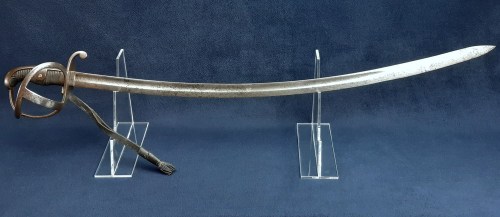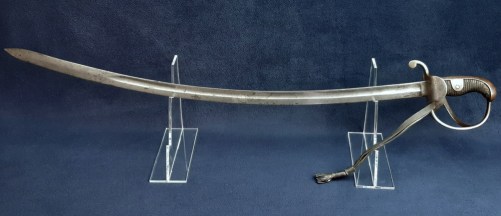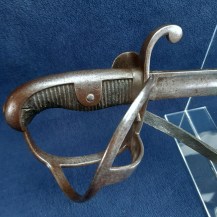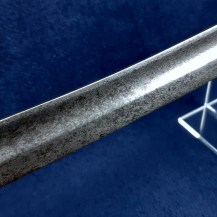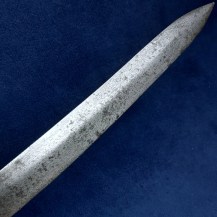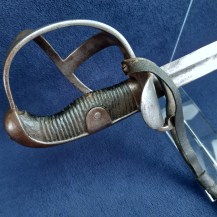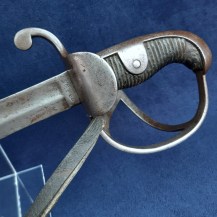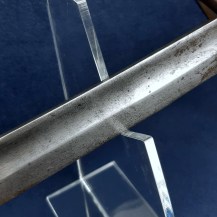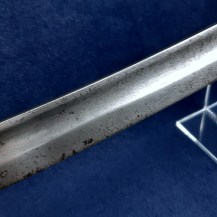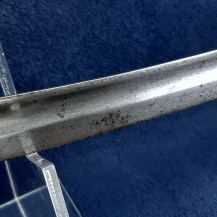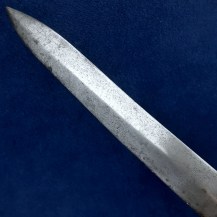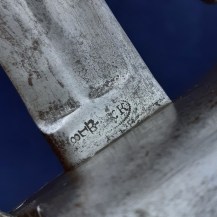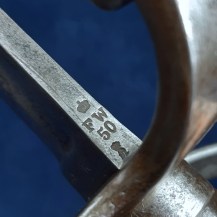British Royal Engineers Driver’s Sword by Schnitzler & Kirschbaum, Dated 1850
Curved single fullered blade with spear point, steel hilt with widely spaced two-bar hilt with transverse bar joining the knucklebow and side bar, turned down inner guard. Smooth steel backstrap with integral pommel cap and riveted ears over ribbed wood grip covered with black leather. Black leather sword knot secured to the inside of the hilt by a screw. No scabbard.
Blade 34½ inches in length, the sword 40 inches overall.
The blade is stamped at the ricasso on one side with the maker’s mark ‘S & K’ within a dotted oval, indicating Schnitzler & Kirschbaum of Solingen, Germany, and a crown inspection mark with ‘L’ for Liege. The spine of the blade is stamped with a crown over ‘FW 50’ indicating it was manufactured in 1850 during the reign of Friedrich Wilhelm (Frederick III) of Prussia, and a Prussian crown inspection stamp.
These swords are thought to have originally been a proposed new model for Prussian cavalry, manufactured in 1849-50 for trials run by the Prussian Guard Hussar Regiment. The pattern was not adopted and the swords seem to have been sold off as surplus and purchased by the British via the Belgian arms market. At the time Liege was a significant enough hub for the arms trade for there to be British inspectors based there whose distinctive stamp confirms they were taken into service with the British Army.
It is historically very unusual for the British military to directly purchase a foreign pattern of sword, but the purchase probably took place around the time of the Crimean War, when there was an urgent demand for weapons. The German swords ended up issued to wagon drivers of the Royal Engineers, who at the time were not yet part of the British Army, but were under the direct control of the Board of Ordnance, the same body responsible for supplying equipment, weapons and ammunition to the Army and Navy.
The mounted Drivers were responsible for drawing wagons of engineering equipment overland. There was much that needed hauling: during their time in the Crimea the Engineers constructed the first military telegraph and ran the Army’s postal system in addition to their modern role as sappers.
The sword knot on this example is unusual: this pattern usually features a leather finger loop attached to the inside of the guard, a feature not seen on British swords and fragile enough to be missing from many survivors. On this example a leather knot is attached instead, secured to the hilt by the same screw. The knot appears antique and is not a British type I recognize; perhaps it is German? Since there is no sword knot slit on the hilt it would make sense to attach a knot there, and the finger loop would probably not have been valued as a feature by the British. I have not seen any another example so modified.


